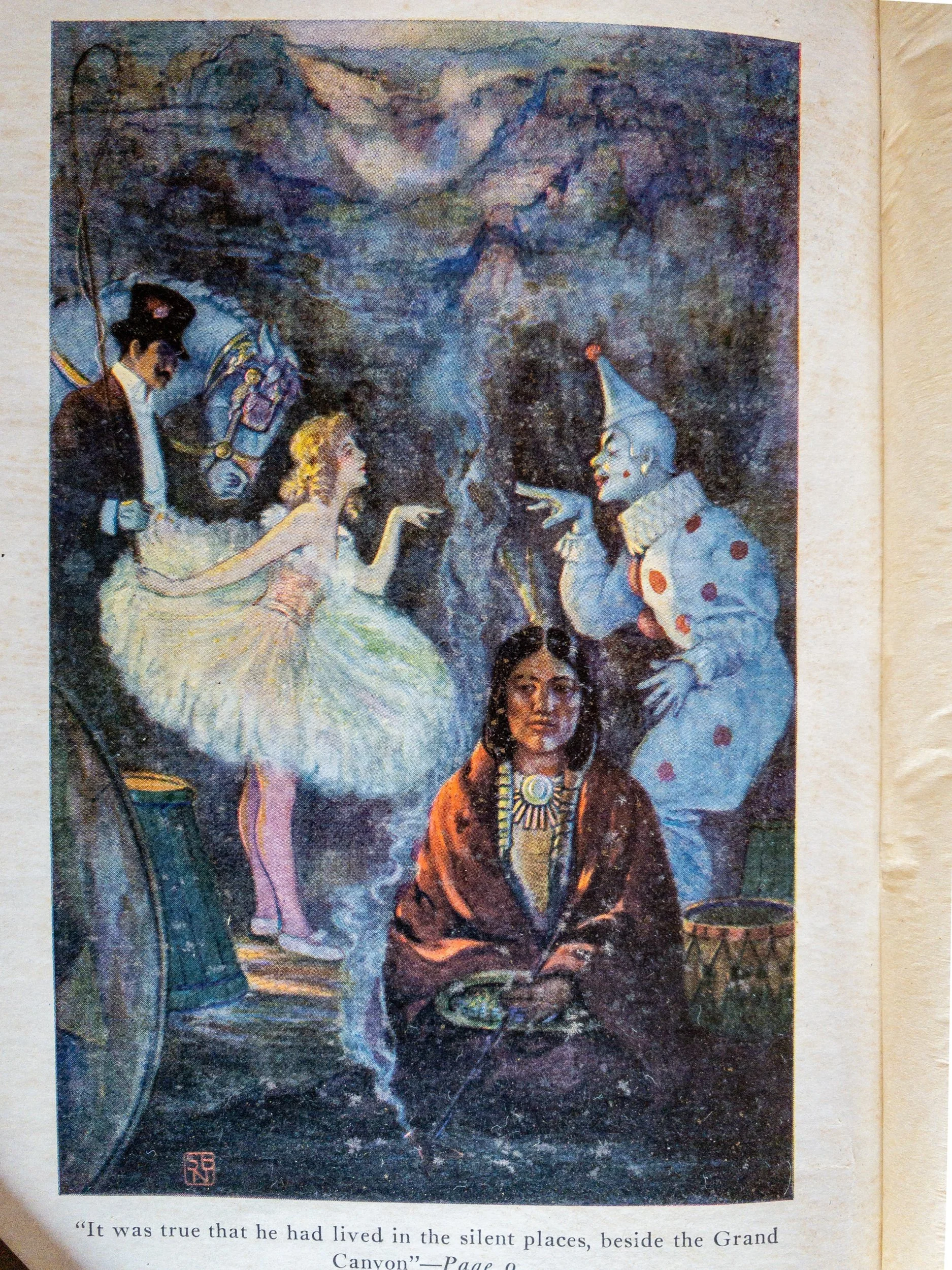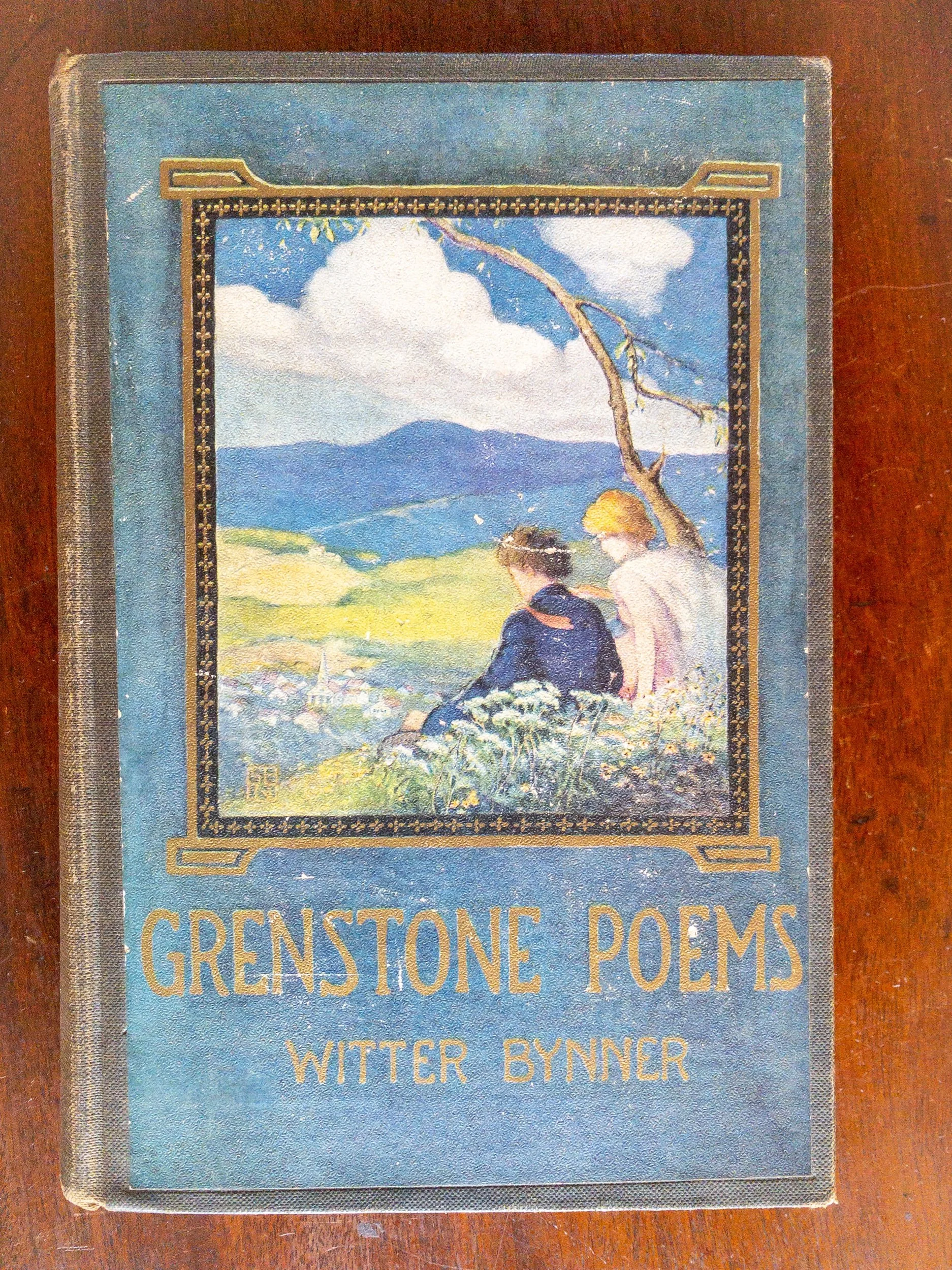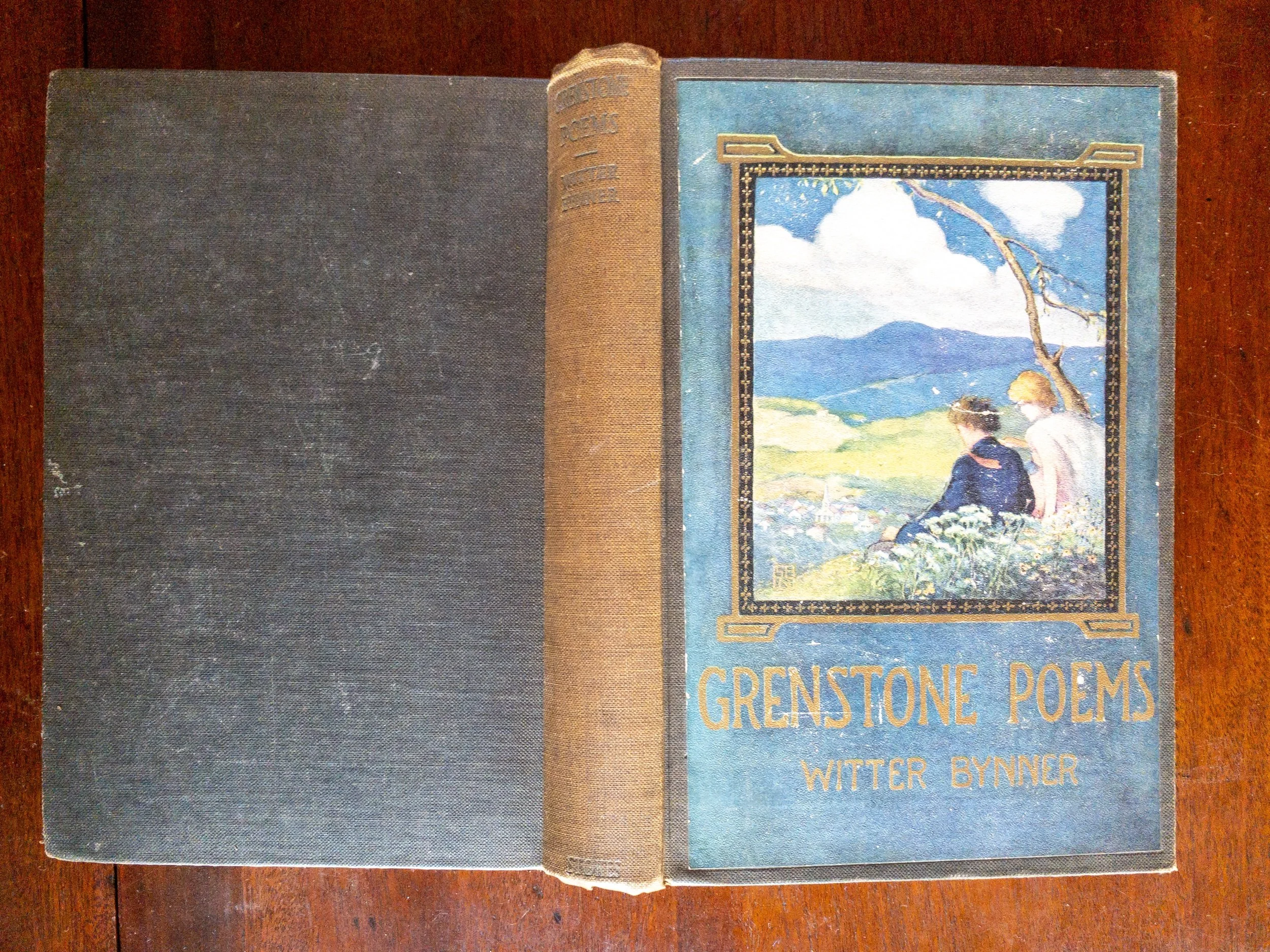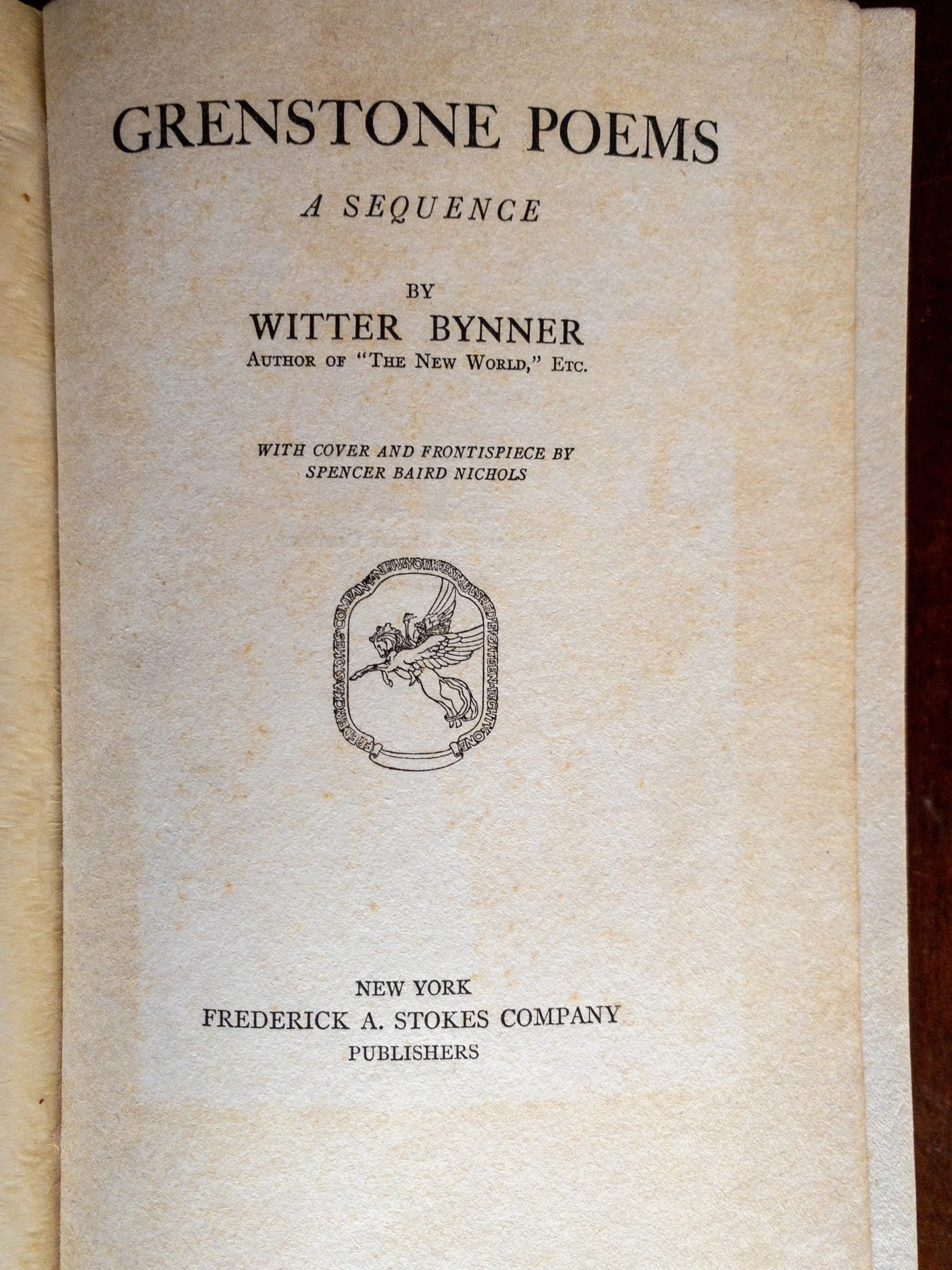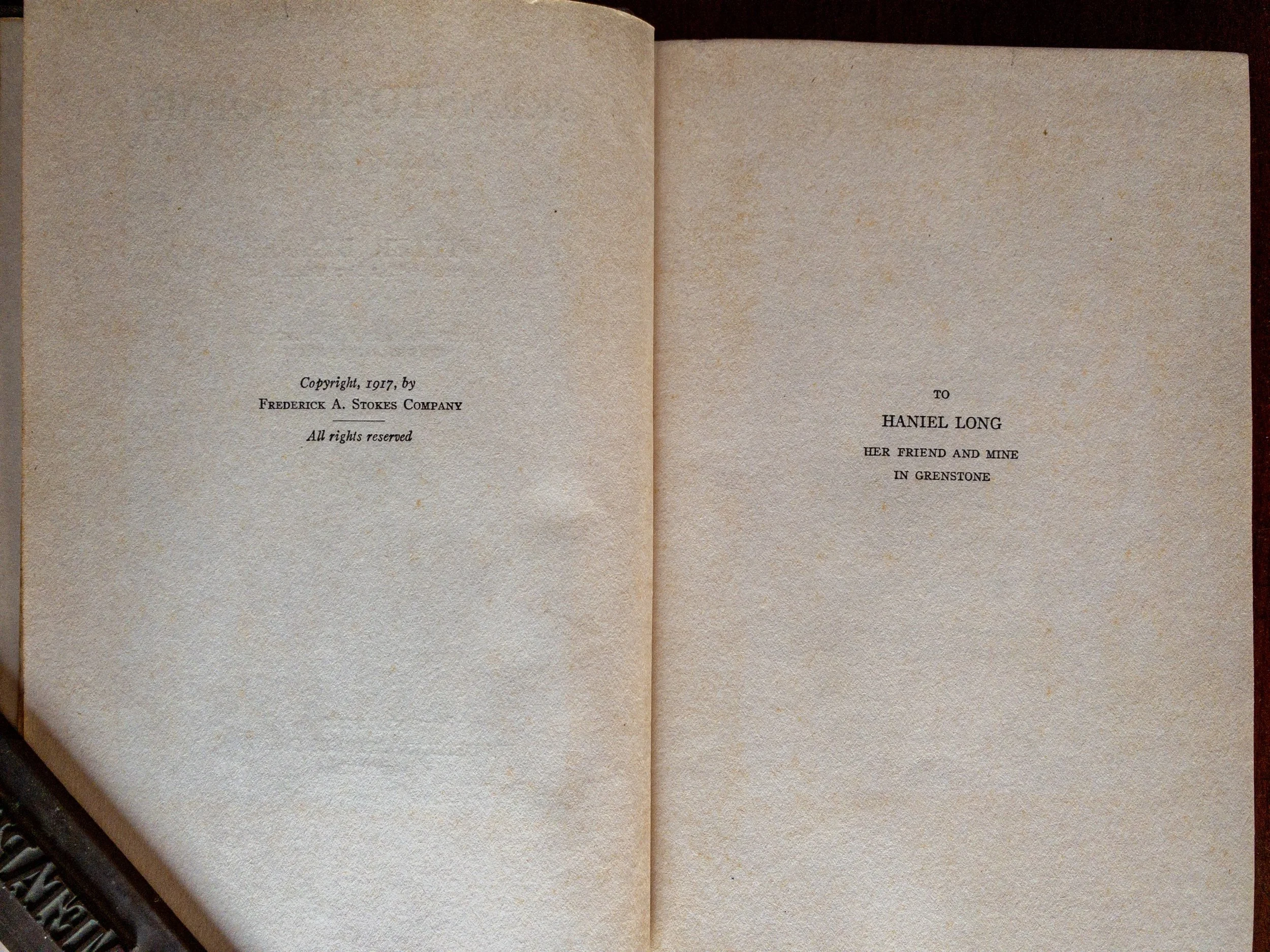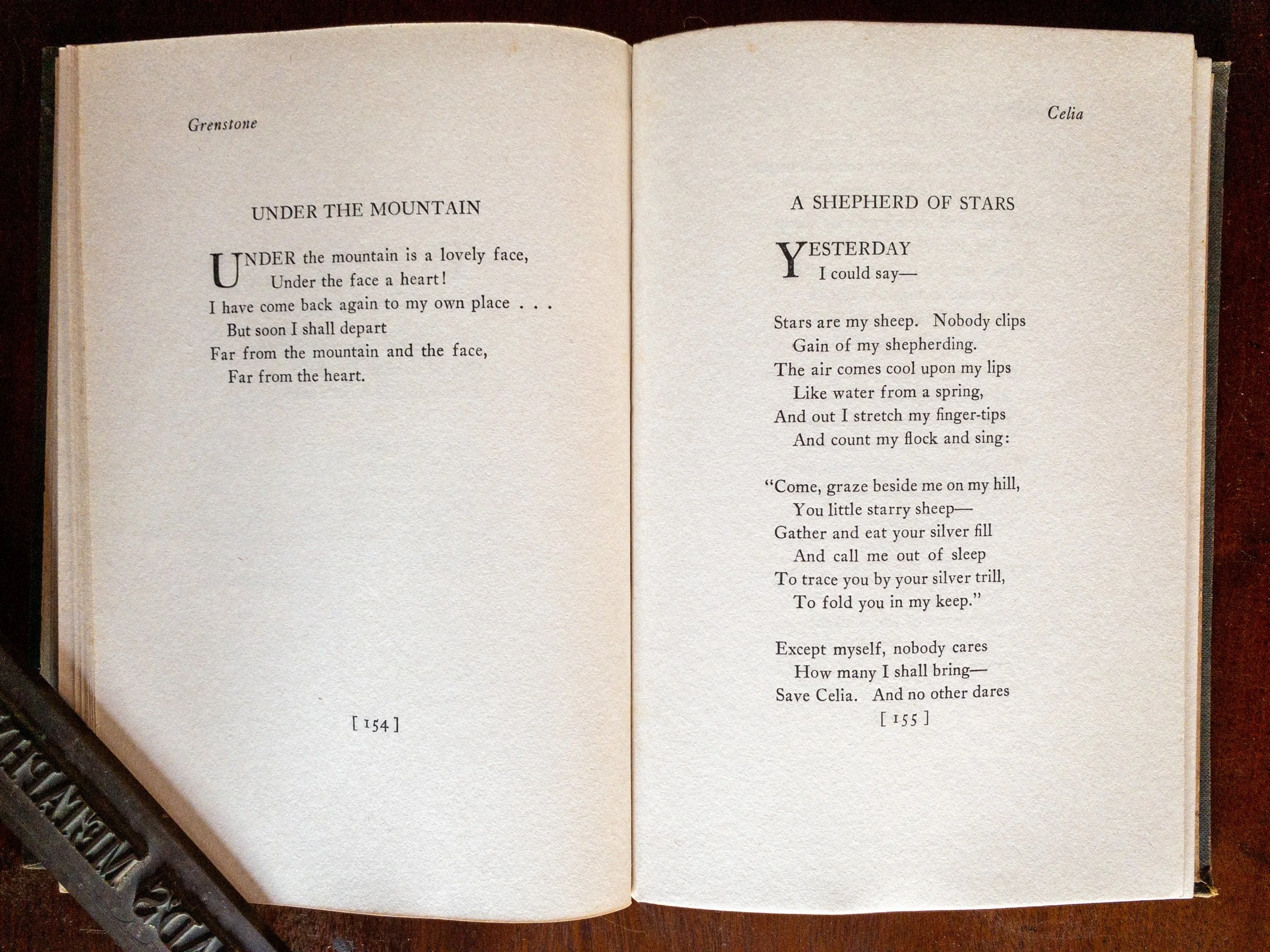I listed this book, Grenstone Poems, at $37 for twenty-seven months.
Frederick A. Stokes Company, New York, 1917. Hardcover. Condition: Very Good. No Dust Jacket. First Edition. 307 pages. 5-5/8 by 8-1/4 inches. With cover illustration and frontispiece by Spencer Baird Nichols. Bynner (1881-1968) was an American poet and playwright who moved with other writers and luminaries of his day, including D. H. Lawrence, Aldus Huxley, Ansel Adams, Robert Frost, Carl Sandburg, Willa Cather, Martha Graham and Georgia O’Keefe among others. See the Witter Bynner Foundation for Poetry, and the Witter Bynner Poetry Prize. First edition (first printing). Black cloth with color illustration on front cover, and color frontispiece with tissue guard. Some edge wear to top and base of spine; spine is a bit faded. Page edges show some foxing as does text block; binding is firm and square, pages flow smoothly. Seller Inventory # 2003-004
Finding no takers, but inspired by some new—to me—information about Witter Bynner, I did the only logical thing and jacked the price up to $137.
The Lyric Year was the culmination of a competition to collect and publish the 100 best poems of 1912 in an anthology. The top prize was $500, or somewhere north of $15,000 in today’s money. It drew entries from many of the top established poets of the time including Bynner, who had already had two volumes of his work published, along with his good friend Arthur Davison Fricke with four volumes to his credit.
One E. Vincent Millay, of Camden, Maine entered Renascence. In accepting the work for publication the editor, Ferdinand Earle, addressed Millay as “Dear Sir.”
The first stanza, at least, is familiar to Mainers as it describes what is arguably one of the state’s two iconic geographical features, the Camden Hills:
All I could see from where I stood
Was three long mountains and a wood;
I turned and looked another way,
And saw three islands in a bay.
So with my eyes I traced the line
Of the horizon, thin and fine,
Straight around till I was come
Back to where I’d started from;
And all I saw from where I stood
Was three long mountains and a wood
Millay’s recitation of Renascence, the rest of which goes much deeper than a vivid description of a beautiful landscape, at a party at the Whitehall Inn, where her sister Norma was a waitress, drew the attention of a connected New Yorker, Caroline Dow, who, with others, arranged the financing and admissions formalities that allowed Millay to complete her formal education at Vassar College. As the Whitehall Inn remains a desired Camden destination, this too is a familiar element of the Millay’s Maine story.
Less familiar to Mainers is the fact that Renascence’s failure to garner a prize in The Lyric Year boomeranged to her benefit and effectively launched her celebrity.
On Thanksgiving 1912 Bynner and Ficke wrote her: This is Thanksgiving Day: we thank you. If we had a thousand dollars, we would send it to you. You should have unquestionably have had the prize. All three prizes.
Like Earle initially, Ficke and Bynner were puzzled about Millay’s back story and gender. Ficke had previously written Earle that Renascence was “a real vision, such as Coleridge might have seen. Are you at liberty to name the author? The little item about her in the back of the book is a marvel of humor. No sweet young thing of twenty ever ended a poem precisely where this one ends: it takes a brawny male of forty-five to do that. Don’t, however, fear that Bynner and I are going about bud-mouthed with dark suspicions; if it’s a real secret, we respect the writer of such a poem far too much to want to plague ‘her.’” Others to laud Millay and call out The Lyric Year were Jessie Rittenhouse the New York Times poetry critic and the poet Louis Untermeyer who wrote in the Chicago Evening Post that Renascence was “without doubt, the surprise of the volume.”
These things I learned while reading up on Renascence in Nancy Milford’s truly excellent biography of Millay, Savage Beauty. Engaged in some prosaic background reading for another project Witter Bynner’s name popped off the page at me. I recognized the name but knew not why until I looked in my own listings on Abebooks and found Grenstone Poems. The book is in good shape and Bynner had himself a fine career, consorting with all the heavy hitters. One of the things that had made me price it a little higher than my usual threshold (least expensive similar edition with seller created images) was the cover illustration and the frontispiece. I’ve put some time into exploring cover design in the period before dust jacket design overwhelmed cover design as a distinct practice and sidelined cover design. I may value the era more than the market does. But the fantastic frontispiece is the clincher. It bears so much scrutiny; it is perplexing, and well worth $37 in its own right.
No one bought the book at $37 so at $137 I will probably keep it on my shelves until the end. But Witter Bynner deserves this tip of the hat, and the Book of the Month, for recognizing the genius of Edna St. Vincent Millay back when she was just a girl from Maine looking to go to college.
